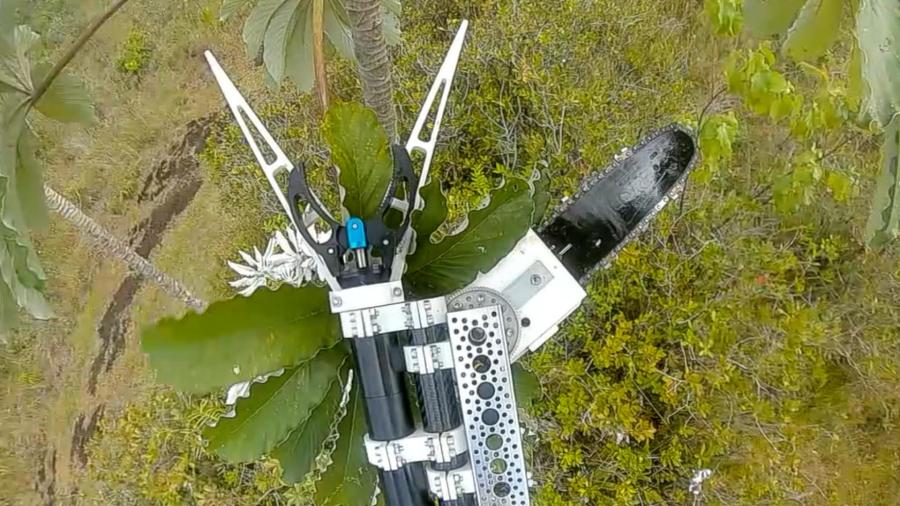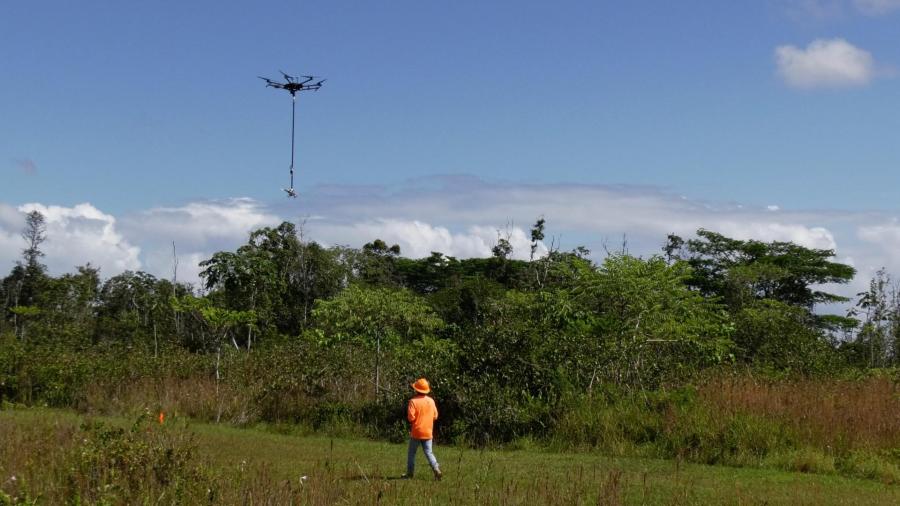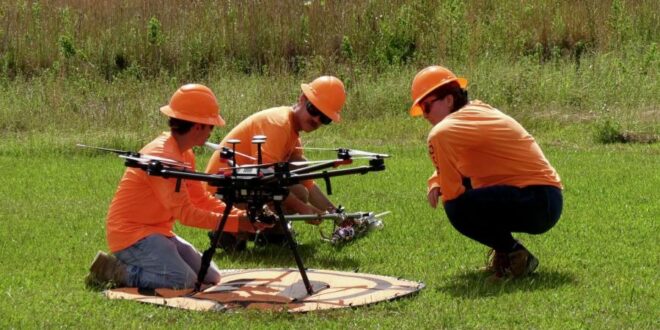HILO, Hawai’i (KHON2) — The University of Hawai’i at Hilo has announced that professor Ryan Perroy and his research team collaborated with ETH Zürich, a public research university in Switzerland; the U.S. Department of Agriculture; R&R Machining/Welding in Hilo on Hawai‘i Island and UH’s Academy of Creative Media to create aerial chainsaws that can provide samples from ‘ōhi’a trees.
According to professor Perroy’s team, “the device, named Kūkūau, consists of a small rotating chainsaw with a robotic gripper claw mounted beneath a drone and can cut and retrieve branches up to seven centimeters in diameter.”
Get Hawaii’s latest morning news delivered to your inbox, sign up for News 2 You
The team collects the samples to perform diagnostics and to test for forest fungal pathogens, in particular the ones that are causing rapid death in native ‘ōhi’a trees, known as Rapid ʻŌhiʻa Death.
Often, the trees are located in areas where the team cannot access them; and the technology that did exist was not adequate to capture the size of samples needed.
“There have been times when we detected an ‘ōhi‘a tree suspected of infection with the pathogens responsible for Rapid ‘Ōhi‘a Death, but because of the location, it was too dangerous or problematic to send field crews out to sample it for confirmation,” said Perroy.

So, they came up with a solution: creating their own technology, Kūkūau.
“Kūkūau has the potential to help in those types of situations,” added Perroy.

UH Hilo researchers activate remote-controlled drone device, Kūkūau in Hilo Hawai’i, November 2022. (Photo/UH Hilo)
“We successfully detected the target fungal pathogen from the collected branches and found that branch diameter, leaf presence and condition, as well as wood moisture content are important factors in pathogen detection in sampled branches,” Perroy explained.
You can read the report from their new findings.
Get news on the go with KHON 2GO, KHON’s morning podcast, every morning at 8
“We watch a lot of trees die from Rapid ʻŌhiʻa Death. We see the encroachment of invasive species; and this system, the Kūkūau system, allows us to take a more active role in doing something about these things that we’re seeing in our forests,” said Perroy.
 Unmanned Aerial Vehicle The latest drone news
Unmanned Aerial Vehicle The latest drone news



